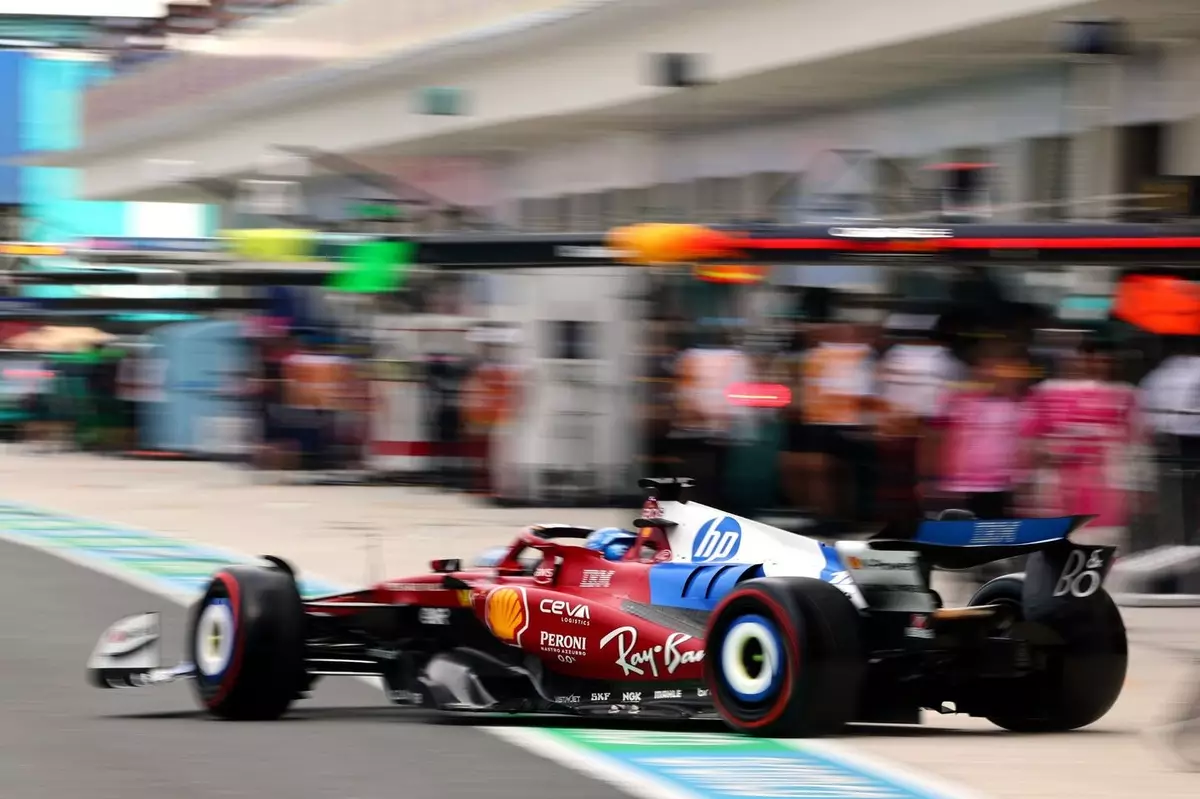In the elite world of Formula 1, every millisecond counts, and for Charles Leclerc, the frustration mounts as he grapples with Ferrari’s apparent performance deficit in the 2025 season. Despite assurances from the team that they are squeezing every bit of potential from their car, Leclerc’s eighth-place qualifying position at the Miami Grand Prix tells a different story. This outcome isn’t merely disappointing; it underscores deeper issues within the Ferrari lineup, one that has ambitions to reclaim its former glory on the racetrack.
Ferrari’s struggles were particularly apparent as the team faced a challenging qualifying session where they found themselves outpaced not only by established competitors like Red Bull and McLaren but also by Williams—once seen as the underdog of the series. The stark reality is that despite Leclerc’s efforts, he was left far behind, trailing 0.550 seconds from Max Verstappen’s pole position. This showcases a worrying trend—Ferrari seems to have hit a speed wall while others advance.
The Technical Dilemma
What lies at the heart of Ferrari’s current predicament? As Leclerc himself expressed, it’s not just about how well the car is being utilized; it’s about the fundamental design and capabilities of the car itself. The driver felt satisfied with his own performance, yet the results were lacking, leading to the conclusion that it’s the car’s inherent raw performance that needs urgent attention. When drivers report feeling “satisfied” yet are still far from competing for pole positions, it becomes evident that the car struggles particularly with downforce crucial for maintaining speed in intricate corners—the Achilles’ heel of the Ferrari model.
This concern becomes magnified on circuits like the Miami International Autodrome, with its array of low-speed corners posing a particular challenge. Where Red Bull and Mercedes are able to navigate these curves with remarkable agility, Ferrari appears clunky and unrefined. Leclerc pointed out that slower sections of the track tend to lay bare the team’s weaknesses, highlighting a need for a fundamental shift in their aerodynamic strategy if they hope to climb the ranks.
A Miscalculation in Approach
Another layer of complexity unfolded when Leclerc faced a setback before the main event—the wet-to-dry sprint race. His crash while maneuvering to the grid, attributed to inappropriate tire choices under excessive standing water conditions, not only jeopardized his sprint performance but also disrupted his acclimatization for the race itself. Leclerc’s admission of the team’s oversight indicates that while drivers face challenges on track, the team’s strategic choices can significantly impact performance outcomes. It begs the question: has Ferrari become too complacent in their strategies or is it a reflection of a deeper misalignment in their operational mindset?
The frustration and the weight of expectations that come with being part of a historically dominant team like Ferrari can’t be understated. For Leclerc and his peers, there is ample motivation to conquer both external competition and internal challenges, yet the barriers posed by technical inadequacies remain daunting.
Looking Ahead: A Call for Transformation
As Ferrari continues to navigate through this turbulent chapter, it is crucial for the organization to engage in a candid introspection of their current trajectory. Pushing limits requires not just maximizing performance but also an embrace of radical changes that may include reevaluating design, engineering philosophy, and strategy methodologies. With competitors evolving at such breakneck speed, sticking to legacy mindsets may no longer suffice.
The Miami Grand Prix is not just another event in the calendar; it is a litmus test of Ferrari’s potential for growth. How they choose to respond in the wake of yet another underwhelming performance will define their journey forward. Leclerc’s insight into the nuances of the car and what’s lacking could serve as a springboard for essential discussions within the team—propelling them out of the shadows and back into the limelight where they belong.

